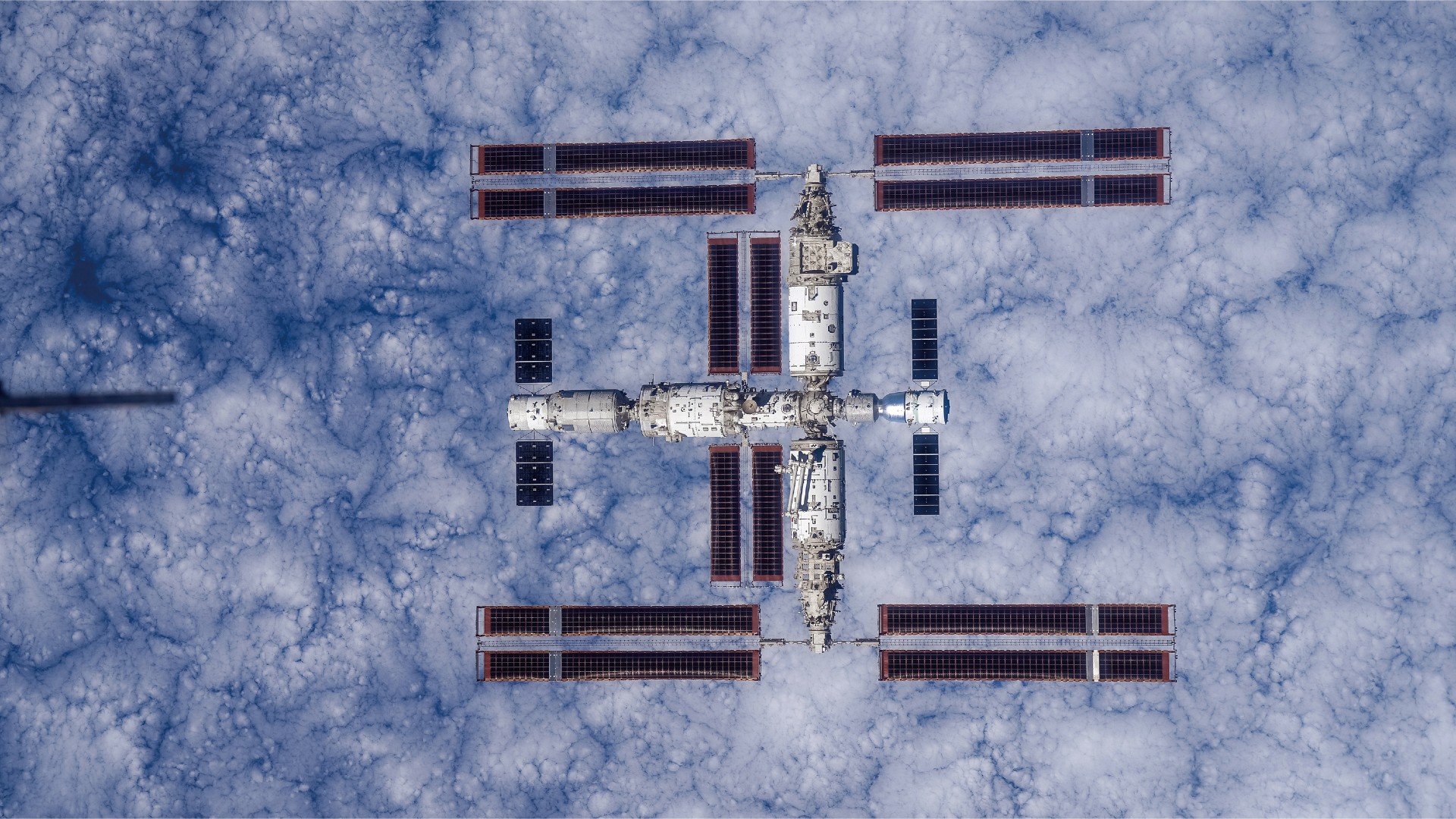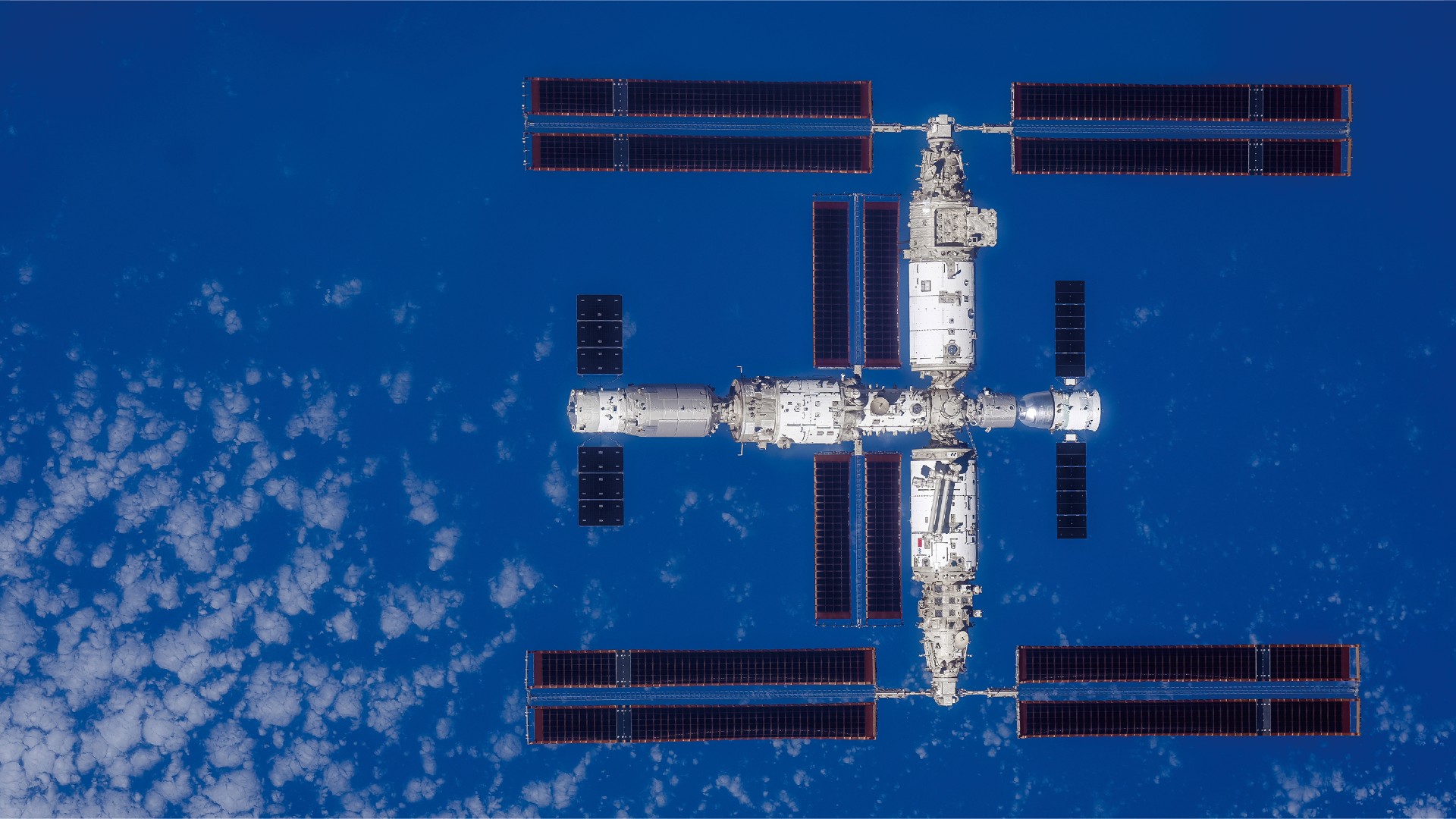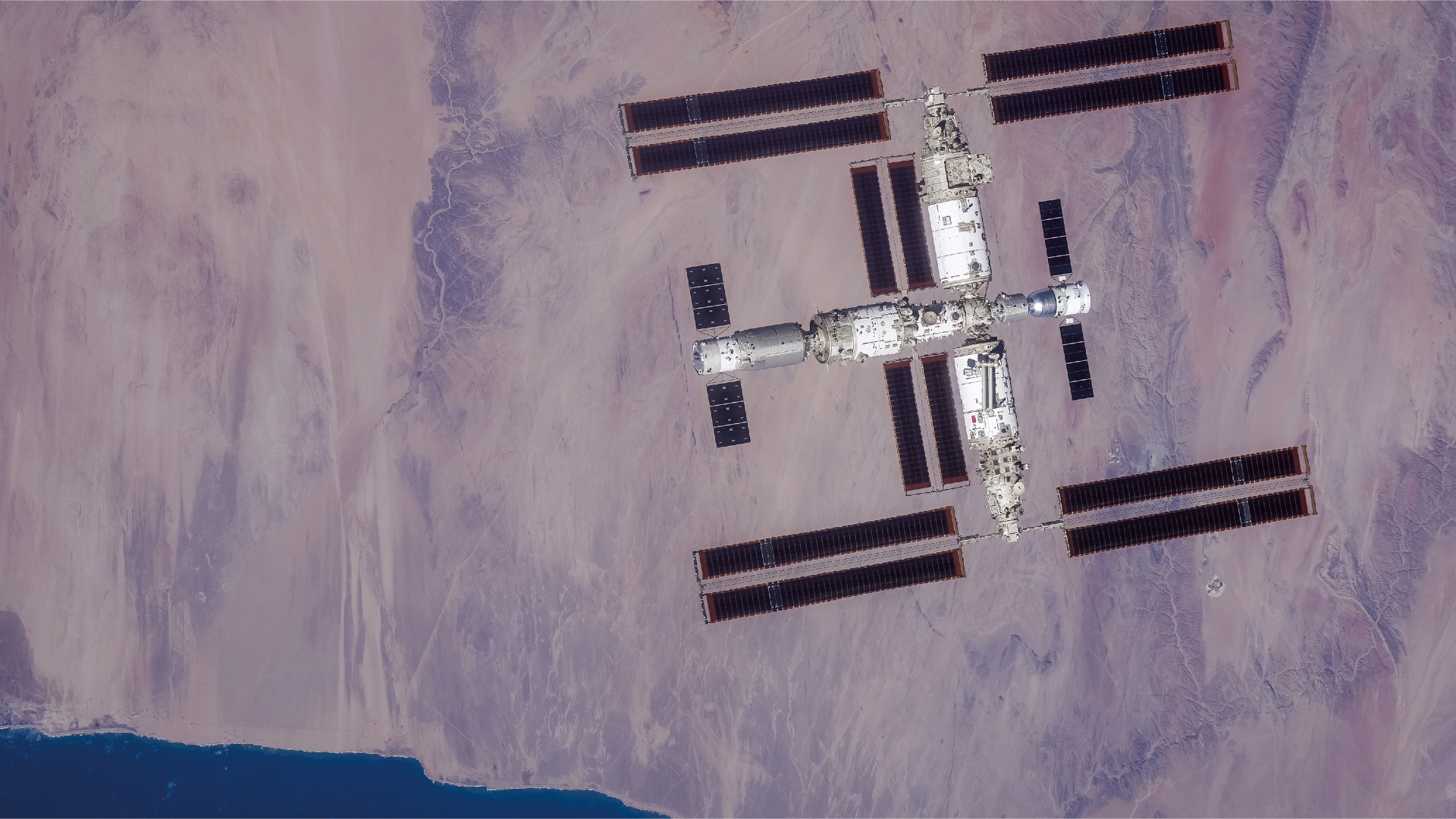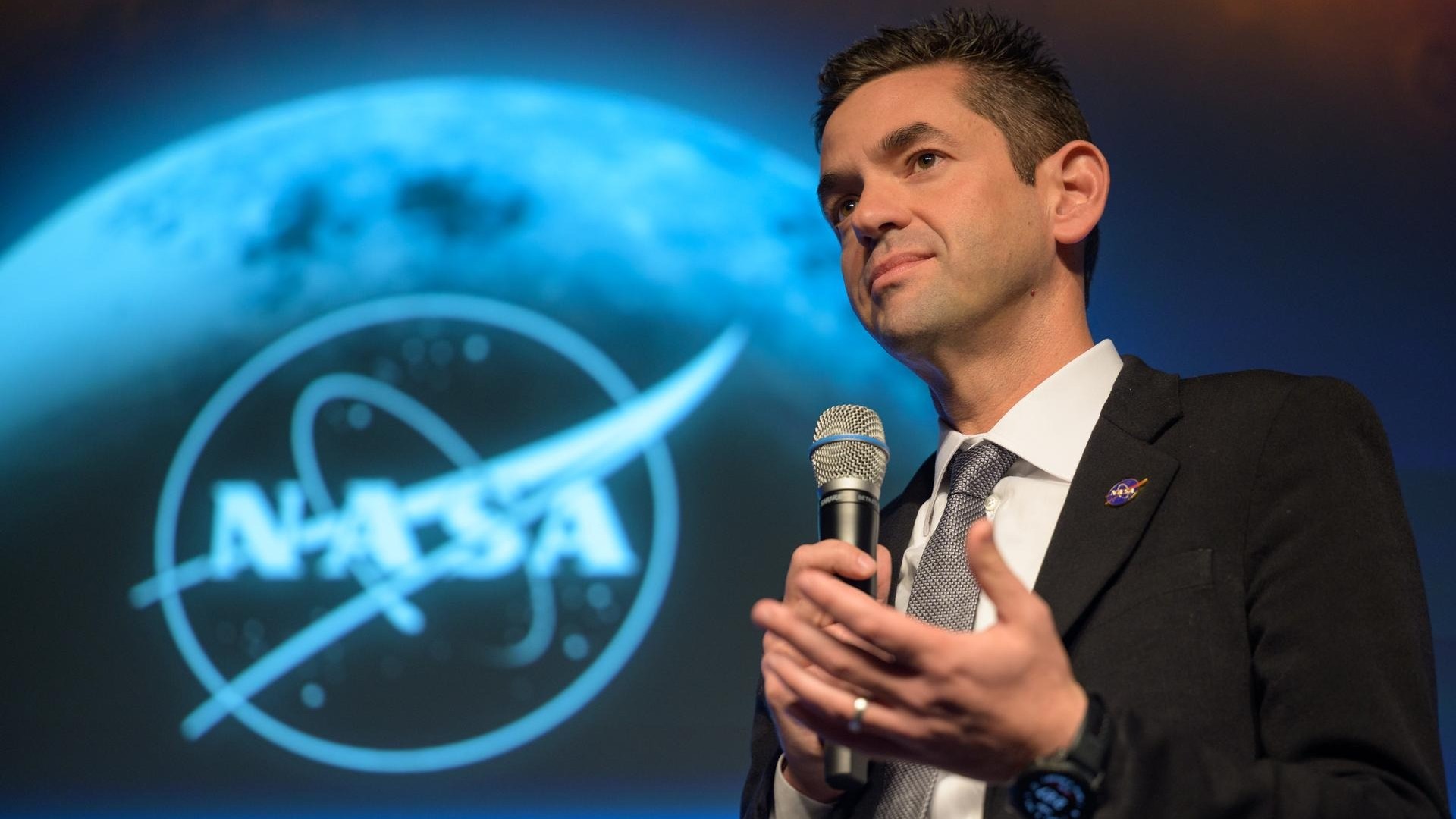China releases 1st images of complete Tiangong space station (photos)
The pictures represent the first time the full structure of the Tiangong space station has been fully imaged since it arrived in orbit.

The crew of China's Shenzhou 16 mission captured incredible images of the Tiangong Space Station as they departed on their way back to Earth.
The pictures, taken with a high-definition camera, represent the first time the full structure of the Tiangong space station has been fully imaged since it arrived in orbit.
Prior to disembarking, the Shenzhou 16 team handed control of the space station over to the Shenzhou 17 crew, who arrived at Tiangong on Oct. 26. The three taikonauts (Chinese astronauts) consisting of commander Jing Haipeng, Zhu Yangzhu and Gui Haichao then left Tiangong on Oct. 30 in the Shenzhou 16 return capsule and arrived back from low-Earth orbit on the same day.
As they made their way toward Earth, the crew turned their cameras toward their former temporary home, capturing breathtaking views of the laboratory in orbit above Earth.
Related: How to see and track the Tiangong Chinese space station
Located at 217 and 280 miles (340 to 450 kilometers) over the planet, the first unit of the Tiangong known as Tianhe arrived in low-Earth orbit in 2021. Its first crew, Shenzhou 12, arrived at the space station on June 16, 2021. They spent 90 days at the station, which was three times longer than any prior taikonaut mission.
The second and third units of the space station, Wentian and Mengtian, were launched in 2022 and 2023, respectively. This completed the 180-foot (55-meter) long station, which weighs 77 tons and is about 20% as large as the International Space Station.
Breaking space news, the latest updates on rocket launches, skywatching events and more!
Since then, Tiangong — whose name means "Heavenly Palace" — has hosted a rotating crew of three taikonauts who have performed a host of important science experiments, something the CMSA aims to maintain for at least a decade.
The crew of Tiangong 16, the fifth team to inhabit the space station, continued the scientific exploration conducted aboard the space station by conducting a spacewalk, growing vegetables, and conducting a live lecture from space during which they demonstrated lighting a match in microgravity.
The stunning Shenzhou 16 images may capture Tiangong in its full glory as it is currently, but if the CMSA gets its way, the image will soon be out of date. On Oct. 4 at the 47th International Astronautical Congress in Baku, the space agency revealed it intends to expand the space station with an extra three modules, bringing its total unit count up to six.
In addition to this, the CMSA intends to send Tiangong some company in the form of a Hubble-class space telescope called "Xuntian" that will orbit Earth alongside the space station and will be capable of meeting up with it for repairs, refueling, and even upgrading.

Robert Lea is a science journalist in the U.K. whose articles have been published in Physics World, New Scientist, Astronomy Magazine, All About Space, Newsweek and ZME Science. He also writes about science communication for Elsevier and the European Journal of Physics. Rob holds a bachelor of science degree in physics and astronomy from the U.K.’s Open University. Follow him on Twitter @sciencef1rst.


